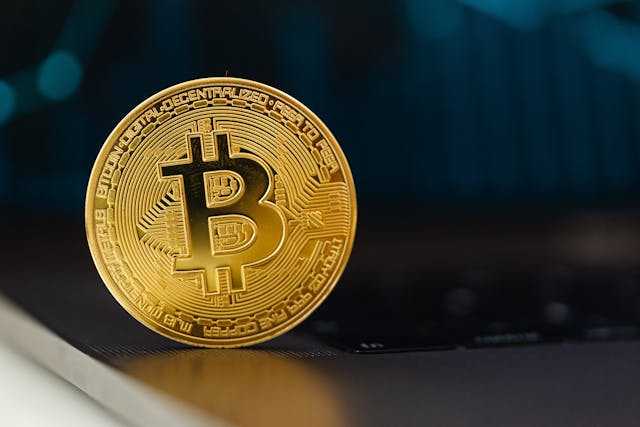
What is Bitcoin? It is the original, and the most famous, digital currency. Let’s look at what Bitcoin is, why it was created, and how it works.
Bitcoin was introduced to the world in 2009 by someone who said their name was Satoshi Nakamoto. Nobody knows who Satoshi Nakamoto is or even if it is a real person. It could be a group of people. There are several theories as to the identity of the person who created Bitcoin, but there is no conclusive evidence.
Bitcoin is a digital currency that has a value based on supply and demand. All currencies have a value that is decided by supply and demand, so Bitcoin is not unique there. If the number of dollars decreases, they become more valuable. If the number increases, they become less valuable. The main difference is that with all major world currencies, their value is decided by the governments of those countries with advice from their central banks. Countries can affect the value of their currencies by printing more money and devaluing the currency, or by taking money out of circulation and raising its value. Bitcoin is different because of that.
Bitcoin was created for two main reasons. The first reason was to have a form of payment that is completely anonymous and cannot be tracked. There are many different reasons why people wouldn’t want their transactions to be followed. (As we shall learn, Bitcoin is actually traceable by any government agency that so chooses.) Secondly, there is no interference from a central organization, such as a government or a bank.
How does Bitcoin work? Bitcoin is a cryptocurrency, which means it is a form of money that is digital. There are no paper notes or coins like most other currencies have. You store your Bitcoin in a cryptocurrency wallet and you can send pieces of Bitcoin to other wallets to pay for things. Bitcoins are broken up into Satoshis. 1 Bitcoin is 100 million Satoshis.
The record of every transaction that is created when someone purchases something with Bitcoin has to be saved and this becomes the blockchain. Each transaction is in a block and it is connected to the block before it. These blocks are encrypted and they have to be decrypted so that the transactions are clear and recorded. Decrypting these blocks is the work of Bitcoin miners and they are paid in Bitcoin for every block that they decrypt. To decrypt the block, they have to work out the key and they use their computers to do that. The computers perform trillions of complex calculations to come up with the number that is the key for that particular block. If they are right, the block is opened, and they earn 6.25 Bitcoin. The value of Bitcoin they earn for cracking a block halves every few years. In the beginning, it was 50 Bitcoins. Now it is 6.25 and sometime this year it will halve again to 3.125. However, it is a competition and all of these Bitcoin miners are competing to open the blocks. Generally, the miners with the most powerful computers win. This system ensures that the transactions are all recorded and checked. It also results in a steady supply of Bitcoin into the market. The amount of Bitcoin that will be released over time is set at 21 million Bitcoins.
What are the good and bad points of Bitcoin? The good points are that it is a digital currency that cannot be regulated. There are, to my mind, far more bad points. The fact that Bitcoin can’t be regulated or controlled means it cannot be trusted and its price is very volatile. It can go up by thousands of dollars and then drop by thousands of dollars in the space of a few days, which is not something that a regular currency could do. It is supposed to be anonymous, which is one of the reasons for creating the currency, but all of the transactions are clearly recorded in the blockchain ledger. The wallets that people use are also not as anonymous as they think. Some of the real bad points, though, must be the environmental impact. Mining the blocks to verify the transactions takes an enormous amount of computing power. In the beginning, it was possible to do it on a home computer, but now you need a custom built machine. These machines require stupendous amounts of power. Bitcoin mining uses about 240 Terra Watt Hours of electricity, which is about the same electricity consumption as Greece. And the assumption is that Bitcoin will become more popular, which will increase the need for mining. This probably could go away as computing power increases and quantum computers become a reality, but there is no way to know. And this is what I learned today.
Photo by Karolina Grabowska: https://www.pexels.com/photo/selective-focus-of-a-bitcoin-on-laptop-computer-5980743/
Sources
https://cointelegraph.com/explained/can-quantum-computers-mine-bitcoin-faster
https://www.eia.gov/todayinenergy/detail.php?id=61364
https://www.investopedia.com/terms/b/block-time-cryptocurrency.asp
https://koinly.io/blog/can-the-irs-track-cryptocurrency/
https://corporatefinanceinstitute.com/resources/economics/how-is-currency-valued/
https://river.com/learn/how-is-the-bitcoin-price-determined/
https://www.investopedia.com/terms/s/satoshi-nakamoto.asp
https://en.wikipedia.org/wiki/Satoshi_Nakamoto
https://www.investopedia.com/terms/b/bitcoin.asp
https://www.bankrate.com/investing/what-is-bitcoin-mining/#how-bitcoin-mining-works
